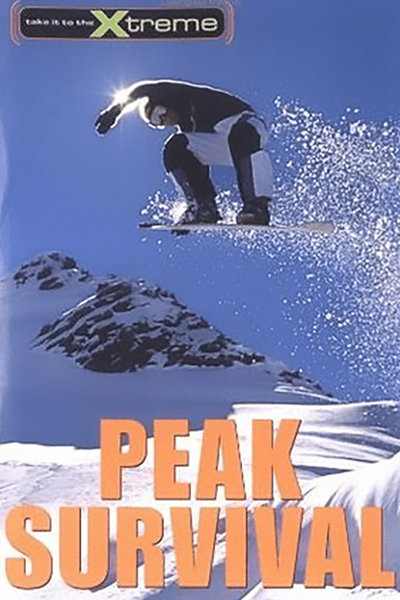
Peak Survival
Xtreme Series
When Jake, Peter and their friend Moses head out for a Western Canadian helicopter-skiing and snowboarding adventure at the same time as fifteen-year-old Fiona is flown to a nearby peak for a snowboarding descent, little do the two parties suspect that they will shortly become a stranded party of four, faced with a perilous descent to civilization. A helicopter crash, avalanche, crevasse fall, wild animal attack and spooky stay in a ghost-town guarantees readers will stay riveted.
Click here to learn about the story behind the book!
Everyone says one’s second novel is the toughest, and I certainly found that to be true with Peak Survival. A first novel is generally written on speculation, no contract or deadline or editor applying pressure. Not to mention that you probably have not yet been through a full critique (unlike on your second), so you soldier blithely on. By the time you’ve been through that critique of the first, you’re aware that there are techniques and skills you now have to incorporate. In short, the second novel is the big learning curve!
Also, I wrote my first novel to keep myself out of trouble while unemployed for a year. By the time I started Peak Survival, I was working fulltime again (as an editor), raising a rambunctious boy with my husband, and trying to come to terms with the fact that the first novel had turned into an assignment for a series. In other words, I now had to produce a novel every six months until the series was finished (that turned out to be five years) “in my spare time.” It was a lot of stress. After I finished Peak Survival I decided I had to cut back on work in order to start the third book in the series; it was too hard on my family life trying to do so much.
On the other hand, Peak Survival was fun to write in that I took up snowboarding specifically to help write it. Quite a change from cross-country skiing, which I had enjoyed for years. My son (age 11) gave me a homemade gift certificate promising me snowboard lessons (from him). We went up to the ski area and he watched me for ten minutes, offering encouragement and tips. Then he gave me a thumb’s up and said, “You’re good, Mom. Have fun. I’m outta here.” And off he went.
So I spent the next hour watching a young Chinese guy teaching his girlfriend in Chinese. I could not understand a thing they said, but I mimicked all she did, and eventually learned enough to get myself down the hill. At which point I realized I had to ride the lift up, and did not know how to get onto a lift with a snowboard! I humbled myself enough to ask a teenage boy ahead of me in the line-up. He smirked and mumbled something about “goofy,” not that I knew what that meant! I somehow managed to get on and exit the lift without making the operator stop the lift!
Here’s some other trivia about Peak Survival:
- To write up the disasters of the helicopter crash, avalanche and the fall into a crevasse, I interviewed a friend who owned a helicopter service, read helicopter accident reports, read books on avalanche safety and interviewed someone who had survived a fall into a crevasse.
- I won a helicopter ride from a charity auction, and was thrilled to add that to my hands-on research.
- My husband helped me with the wolverine encounter write-up, based on a wolverine sighting he’d once been privileged to experience.
- My character Fiona remains my favourite girl character, although my editor told me she initially “overshadowed” my main characters, Jake and Peter, and so I had to “sand her down” somewhat before publication.
- She has “pale blue eyes” because in the first version of the manuscript she gets snow blindness (and people with pale blue eyes are the most susceptible to this), which my editor had me remove because “you have too many disasters in the book, even for a Jake and Peter adventure.”
- I wrote up the snow-cave construction scene after reading a book on the topic. Then I handed it over to a search-and-rescue friend to edit. He laughed and edited it heavily. All of which proves that first-hand experience is far more important than by-the-book, and a writer must always be aware what they don’t really know.
- Fiona is claustrophobic because I am claustrophobic (and know that condition all too well).
- The ghost town they encounter is based on the preserved historic mining site known as BC Museum of Mining in Britannia, British Columbia); I basically “airlifted” it a number of miles northwest to place it in my story.
- I named most of the characters in the book after my nieces and nephews. I thought they’d be pleased until one (Neal) said, “How come my sister gets to be Jake’s sister, and all I am is a dead pilot?”
